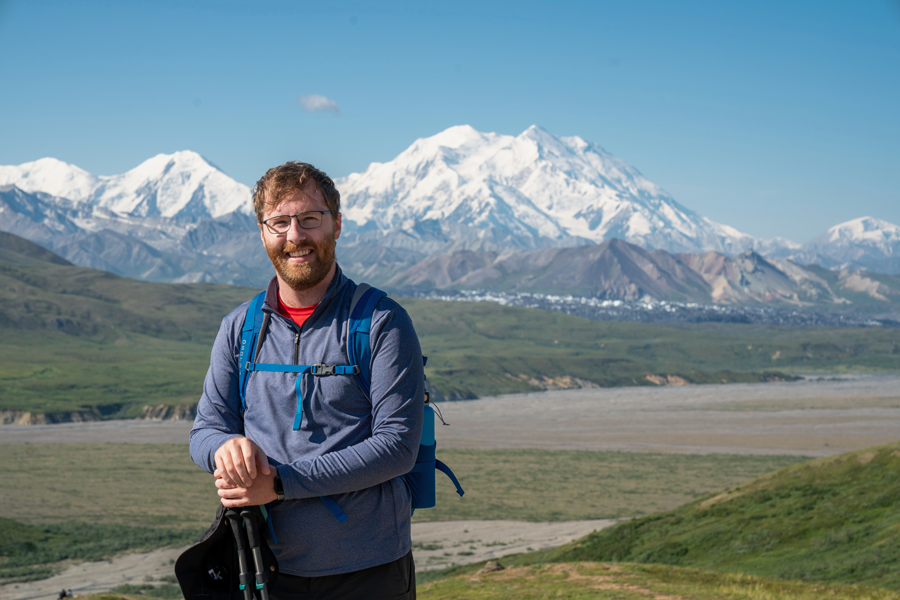Nurturing a Sonic Ecosystem
March 4, 2024
BY LISA SCIORTINO
Dozens of electronic music and intermedia performances are staged in the Merrill Ellis Intermedia Theater annually. Doctoral composition studies students frequently use the MEIT for researching, composing and presenting their dissertations.
Garrison Gerard (’19 M.M., ’23 Ph.D.) — a composer of electroacoustic and concert music as well as an intermedia artist — worked extensively in the MEIT while pursuing his degrees in music composition and serving as a College of Music teaching assistant. In 2023, Gerard earned the prestigious Fulbright/National Science Foundation Arctic Research Award.

Since last summer, he has been conducting research with the University of Iceland capturing field sounds in natural spaces as part of a sustained ecological acoustic survey and analyzing the resulting data. It’s similar to research he previously completed in Alaska’s Denali National Park as well as in Subantarctic Chile, Patagonia, the Chihuahuan Desert and South Texas while at UNT. The recordings not only provide a map of an area’s soundscape transformation over time, but also help determine the impact of sound levels, noise pollution and other related factors on its ecosystems.
“You get a map of how the soundscape transforms throughout the day,” he explains. “Mostly it provides insight into how these places are changing. We want people to be able to enjoy these areas in a way that is sustainable.”
Gerard uses the sounds he gathers to create his music compositions. He presented his
doctoral recital, Resonance
Ecology, last year in the MEIT. This immersive, live-generated “sonic ecosystem” wove together
audio and video field recordings from Patagonia, Iceland and Texas, live instrumental
performance and live interactive computer music. The musicians’ performance simultaneously
transformed and responded to the intermedia environment surrounding them and the audience.
“I had an amazing space to work in with all these speakers, with these powerful computers, with these projectors,” Gerard says. “When I had an idea for a research project or my music, the possibilities weren’t limited by what I could do as an artist. It was about what I could do in the space.”